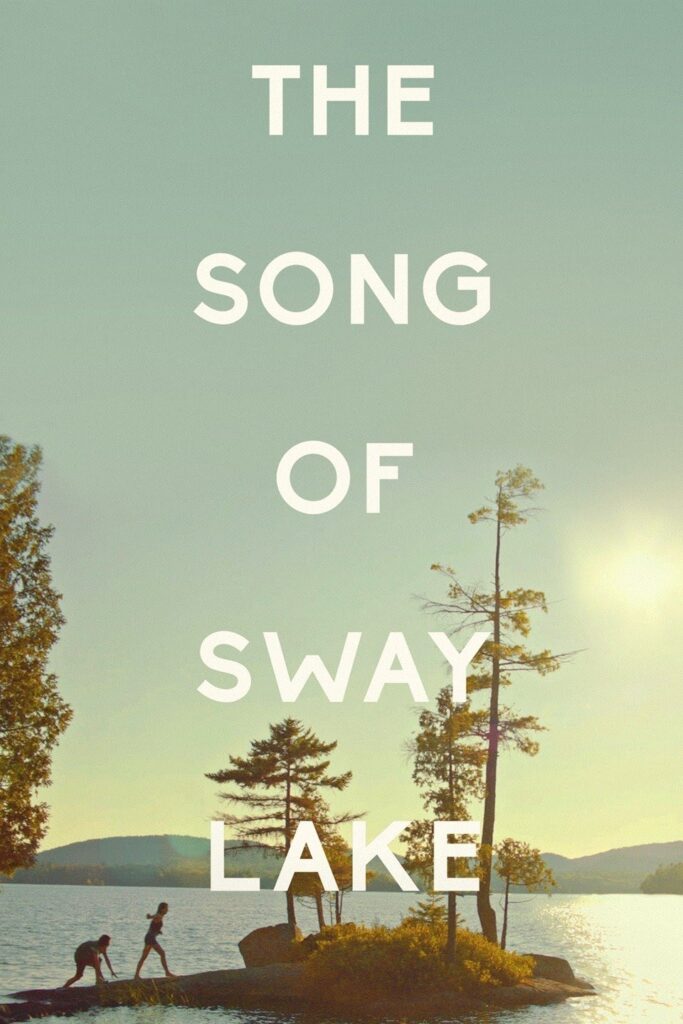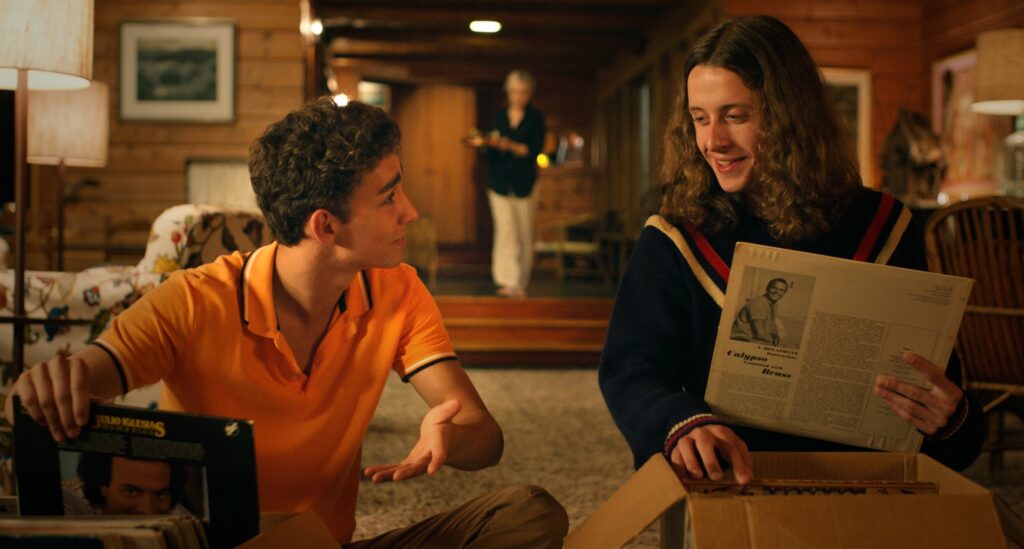
Dancing With The Real Sway: The making and releasing of “The Song of Sway Lake”
We invited longtime TFC friend Ari Gold to muse about his experience making and distributing his latest film, The Song of Sway Lake.

When I set out to make “The Song of Sway Lake,” I figured it would be a quick summer movie—designed to be shot in one location with mostly natural light—a cheap “practice movie” to get myself back into the groove of working with actors after my first film.
My co-writer Elizabeth Bull and I both loved the intellectual-romantic movies of Éric Rohmer that were set in a stunning vacation zone that provided beauty to a filmmaker who could only afford to choose shots wisely. But we also had our own American way of thinking, so of course our script became something completely different: a love triangle about family, nostalgia, theft, the lost jazz of the 1930s, and a young Russian’s passion for a much older woman. But it retained its eye towards being able to be shot very cheaply and still feel big and beautiful.
Spending summers in the Adirondacks as a kid, I was fascinated by this place that seemed to exist outside of time. On the lakes lived a declining American royalty. Along with having unfair privilege, its members were saddled with emotional paralysis. Still, I was jealous of those private lakes. For me, the “real sway” was always out of reach. Maybe I could get the life I wanted by recreating it in this movie—and traveling the world as a glamorous European style film director!
I knew that casting carefully was crucial to my success, and I figured that providing a rich and sexy role to a woman in her 70s or 80s would give me access to a neglected but glamorous movie star for a price I could afford. That’s a key with getting big actors into indies—give them chance to do something that mainstream Hollywood doesn’t.
However, low rates can lead to slow responses, and our casting director (who was also being paid a low rate) didn’t actually bother to send out my offers and inquiries. Realizing summer was rapidly approaching, we replaced the negligent casting director, and a great new one, Jessica Kelly, sprinted in to cast the film under the gun. With only weeks before the warm weather ended, we had to go by instinct, and I took the risk of casting an Irishman to play the Russian, since Robert Sheehan was the only actor of any nationality who seemed to understand the seriocomic aspects of a character we’d written based on a wild man friend from St. Petersburg. Seeking an immigrant whose adoration of a fabled America meets reality in the Sway family, a real Russian director helped me feel confident that Robert Sheehan was our man.
 For the character of the broken family heir Ollie Sway, we needed an actor who could carry the shock of family trauma on his face, and found it in Rory Culkin. And for the role of the matriarch Charlie Sway, which demanded icy majesty, sensual beauty, and hidden layers of feeling, we were lucky to find Mary Beth Peil—who came in at the last minute, with a cheerful and super-pro attitude (from lots of TV and stage experience) that was able to help us through indie nights without heaters or electricity.
For the character of the broken family heir Ollie Sway, we needed an actor who could carry the shock of family trauma on his face, and found it in Rory Culkin. And for the role of the matriarch Charlie Sway, which demanded icy majesty, sensual beauty, and hidden layers of feeling, we were lucky to find Mary Beth Peil—who came in at the last minute, with a cheerful and super-pro attitude (from lots of TV and stage experience) that was able to help us through indie nights without heaters or electricity.
Every movie thinks it doesn’t have enough money. Shooting a low budget film can be crazy making, but it also can help a small crew feel like they’re all on the same team. We filmed on Blue Mountain Lake, New York, pretending that the entire lake was once a glamorous private estate, and its residents played along. The schedule was in constant flux as we danced to the ever-changing weather, which was written intricately into the plot—but never quite on the days we planned.
Plenty of adventures were there for the summer camp atmosphere. I’ll never forget rowing under the moon for a secret midnight conversation with Elizabeth Peña, who played the resentful family maid. Elizabeth asked me to consider adding a secret about her character: that she’d had an affair with the patriarch “Captain Sway” decades before. I loved it and suggested new dialog to tease her secret to the audience. “I’ll play a secret better if no one knows it,” Elizabeth said. What a rare actor to ask for less lines! Her loss is a huge one.
By the time our four weeks of shooting were up, I felt that we’d triumphed by finishing on time and on budget. I didn’t expect what happened next: my brother Ethan, who was composing the essential jazz score, suffered a traumatic brain injury; our rough-cut was politely turned down by my old standby Sundance; and my support-team moved on to other projects.
Suddenly I was sitting alone with an unfinished film and no prospects. It’s hard even for me to admit this, but I then spent several years, on and off, cutting and re-cutting the movie to figure out how to resurrect its rhythm, while my brother worked his way back to health—and finally to an ability to create the beautiful orchestral-jazz score that was essential to the story.
Music is a boobytrap that yanks us into the past, which can be intoxicating or toxic, depending how we process it. But feeling I’d orphaned the film and my own aspirations, I sunk into a depression. I didn’t have proper funds to finish the movie, without a festival acceptance to give my investors confidence; I couldn’t get into a festival without proper funds to complete it. Classic Catch-22!
Nostalgia and trauma are often linked. My characters were in it, as was I. Two days into my first silent meditation retreat, the image of a sinking wristwatch shot into my mind. I didn’t understand what it meant. When I emerged, I realized that this vision was both my life’s greatest challenge and the meaning of my film. I was linked to the three main characters not by biography, but by the struggle to let go of my mistakes. I had to look at my characters: Charlie Sway, a glamorous matriarch in her seventies, seeks her own past; her burdened grandson Ollie seeks the past’s perfection only to destroy it; and the outsider, Nikolai, wants to steal someone else’s past as his own. I was also stuck on the past, trying to relive it or destroy it or steal it.
 Understanding that this sinking watch was the missing shot, I got a watch on eBay, used my iPhone to film it sinking in a local pond, did some VFX for it to match the lake water, and with this simple change and a new voiceover recorded on my bed with the noble Brian Dennehy, was able to complete the film and get it into the Los Angeles Film Festival.
Understanding that this sinking watch was the missing shot, I got a watch on eBay, used my iPhone to film it sinking in a local pond, did some VFX for it to match the lake water, and with this simple change and a new voiceover recorded on my bed with the noble Brian Dennehy, was able to complete the film and get it into the Los Angeles Film Festival.
We had great reviews–riding on 100% on Rotten Tomatoes, as long as the reviewers knew we were a tiny film—but no sales agents came to the screening. Feeling great about the reaction but scared about the finances, I accepted an invitation to be the opening night film at a festival on the island of Mallorca, Spain. Eight hundred people showed up—more great press!—and I sat with Oscar winner Paul Haggis to hear the thunderous applause. Surely this would mean I’d get the film out! But still, no one in the industry cared. Paul commiserated, and made a subtle suggestion: cut another ten minutes from the movie.
Terrified to open that can of worms, I rolled the dice with an editor friend, to see what we could do to unlock the mixed and colored cut and shave off 10% of the film. Three laborious months later, I began to swap the new cut into dozens of festivals, from Emir Kusturica’s Kustendorf festival in the mountains, to a Chinese festival, all of which were now playing and awarding the film with prizes. Still, even with Paul’s help, no distributor wanted to touch a European-style American movie about nostalgia—even with some sexy nudity and a pile of festival trophies. “Americans critics aren’t going to get it,” I was told. At one industry screening, we were told that “for a $20 million movie, it’s very gentle.” When we told them that we’d spent well below one million, people were totally confused. “But it looks so expensive!”
Realizing that for my own sanity I had to make the film available to regular people—and gamble that I could make some kind of return for my investors—we granted world-sales rights to a company called Kew Media, and worked with The Film Collaborative and The Orchard to release it in theaters in my home country. Kew made a bunch of small sales in the countries we’d had screenings, but in the States, despite massive work by our tiny team, we could barely get anyone to notice the film except a few hostile reviewers who reluctantly watched it on their laptops. The market was in a state of massive change, and these years of work got chewed into the wheels. Then, worst of all, Kew Media declared bankruptcy without having paid a single penny of my earnings. I learned the hard way that one has to be relentless about invoicing your own partners, and my team also learned the hard way that no one is to be trusted until they write you a check.
However, the movie is now available all over the world. Ever so slowly, fans are trickling into Instagram, some telling me it’s their favorite movie of all time. All my pain and nostalgia for the old world of cinema as an art form is there on the screen—and in the movie itself. I stuck to my guns and got the film into the universe, and I am finally “dancing with the real sway”—which the movie told me to do from the beginning. Sometimes our creative dreams are telling us the truth.
admin September 11th, 2020
Posted In: Uncategorized